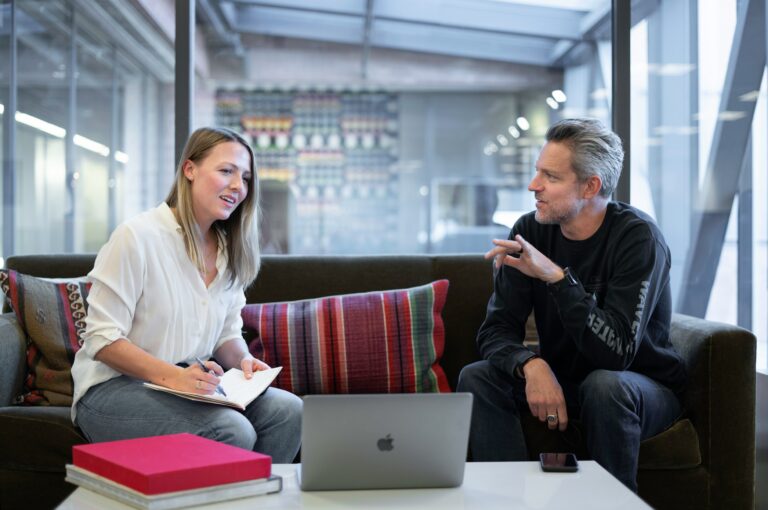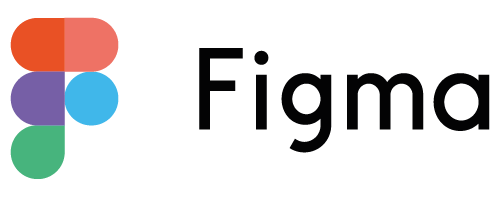Are you struggling to create a product design portfolio that’ll impress potential clients and recruiters in the software industry? If so, you’re in the right place! In this blog post, we’re sharing top tips and best practices for building a killer product design portfolio that’ll help you stand out from the competition and attract the attention of top product design recruiters and UX recruiters.
First, let’s discuss the importance of having a strong portfolio. As a product designer, your portfolio is essentially your calling card – it’s the first thing potential clients and recruiters look at when considering your work, and it ultimately makes or breaks their decision to hire you. So, you’ll want to ensure your portfolio is top-notch and truly reflects your skills and experience.
Now, let’s dive into specific tips for building a product design portfolio that’ll impress potential clients and recruiters.
Start with a clear, concise statement of purpose.
Your portfolio should have a clear purpose or goal guiding its content and structure. Feature this statement of purpose prominently on your portfolio website or in your printed portfolio, and make sure it’s concise and easy to understand.
For example, your statement of purpose might be something like “to showcase my experience as a user-centered product designer in the software industry and demonstrate my ability to create elegant and effective solutions to complex design challenges.” This statement gives potential clients and recruiters a clear idea of what to expect from your portfolio and helps them understand how your work fits into the larger design landscape.
Choose your best work, and only your best work.
When it comes to your portfolio, quality matters more than quantity. You don’t need to include every single project you’ve ever worked on – in fact, doing so can overwhelm and confuse potential clients and recruiters. Instead, carefully select your best work and focus on showcasing it.
When choosing projects for your portfolio, think about the skills and experience you want to highlight. Are you particularly skilled at user research and usability testing? Make sure you include projects that showcase those skills. Do you have a knack for creating stunning visual designs? Include examples of your best visual work.
Tell a story with your portfolio.
A great product design portfolio isn’t just a collection of random projects – it’s a cohesive narrative that tells a story about who you are as a designer and what you’re capable of. To create this narrative, think about the common thread tying your work together. What themes, approaches, or design philosophies do your projects share? How does your work fit into the larger context of the design field in the software industry?
One way to tell this story is by organizing your portfolio into sections or categories reflecting these common themes. For example, you might have a section for user-centered design, another for visual design, and a third for prototyping and testing. This helps potential clients and recruiters see the bigger picture and understand how your work fits together.
Show your process, not just the end result.
Potential clients and recruiters want to see more than just the finished product – they’re also interested in your design process and how you approach problem-solving. To give them this insight, include examples of your process work in your portfolio, such as sketches, wireframes, user flows, and research findings.
Showing your process work also helps potential clients and recruiters understand the context and challenges of your projects. For example, you might include a brief description of the problem you were trying to solve, the constraints you were working within, or the feedback you received from stakeholders. This helps them see the thought and care going into your design decisions and offers a better understanding of the challenges and opportunities you faced.
In addition to your process work, it’s also a good idea to include examples of your prototypes and wireframes. Doing so gives potential clients and recruiters a better understanding of your design process and how you approach problem-solving while showing the evolution of your designs from initial concepts to final products.
Be concise and focused.
Your portfolio should be focused and easy to navigate, which means keeping your descriptions and explanations concise and to the point and avoiding unnecessary information or distractions. Potential clients and recruiters are busy and don’t have much time to spend going through your portfolio, so ensure they can quickly find what they’re looking for and understand the key points of your work.
One way to achieve this is by using clear and descriptive headings and subheadings to organize your portfolio content. This helps potential clients and recruiters quickly scan your portfolio and find the information they’re looking for. You can also use visual elements like images, diagrams, and charts to help explain your work and make it more engaging.
Keep your portfolio up to date.
Your portfolio should be a living, breathing document reflecting your current skills and experience. This means regularly reviewing and updating your portfolio to ensure it’s current and accurate. Whenever you complete a new project or acquire a new skill, add it to your portfolio. This keeps your portfolio fresh and relevant, showing potential clients and recruiters that you’re actively working to improve and expand your design capabilities.
Consider your audience.
When building your product design portfolio, it’s important to consider who your audience is and what they’re looking for. Are you targeting potential clients, recruiters, or both? What do they need and expect? What are the key factors influencing their decision to hire you?
Answering these questions will help you tailor your portfolio to your audience and make it more effective. For example, if you’re targeting potential clients, you might focus on highlighting the results and outcomes of your work, and how your design solutions have helped solve real-world problems. If you’re targeting potential recruiters, you might focus on showcasing your skills and experience and how they align with the needs of the company.
By keeping your audience in mind, you can create a portfolio that speaks to their needs and interests, and ultimately helps you stand out from the competition.
In conclusion, building a great product design portfolio takes time and effort, but it’s well worth it. By following these tips and putting in the work, you can create a portfolio that showcases your skills and experience and impresses potential clients and recruiters. So, if you’re ready to take your portfolio to the next level, start defining your statement of purpose, choosing your best work, and telling a compelling story with your portfolio. And remember to keep it up to date, be concise and focused, and consider your audience.
For inspiration, be sure to check out some great examples of UX portfolios and product design portfolios from other designers. And if you want even more tips and guidance, consider hiring a professional to help you design and present your work. With these tips, you can create a portfolio that showcases your skills and experience and helps you stand out from the competition. Happy designing!











